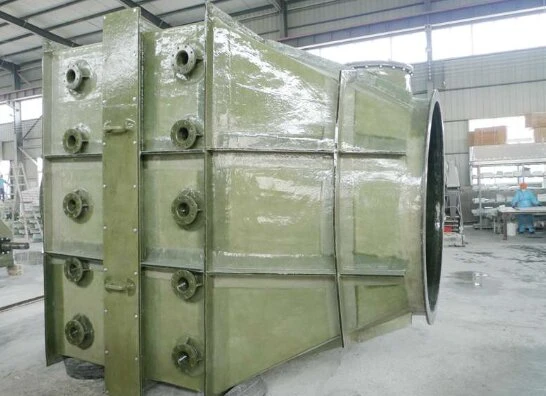
-
 Afrikaans
Afrikaans -
 Albanian
Albanian -
 Amharic
Amharic -
 Arabic
Arabic -
 Armenian
Armenian -
 Azerbaijani
Azerbaijani -
 Basque
Basque -
 Belarusian
Belarusian -
 Bengali
Bengali -
 Bosnian
Bosnian -
 Bulgarian
Bulgarian -
 Catalan
Catalan -
 Cebuano
Cebuano -
 China
China -
 China (Taiwan)
China (Taiwan) -
 Corsican
Corsican -
 Croatian
Croatian -
 Czech
Czech -
 Danish
Danish -
 Dutch
Dutch -
 English
English -
 Esperanto
Esperanto -
 Estonian
Estonian -
 Finnish
Finnish -
 French
French -
 Frisian
Frisian -
 Galician
Galician -
 Georgian
Georgian -
 German
German -
 Greek
Greek -
 Gujarati
Gujarati -
 Haitian Creole
Haitian Creole -
 hausa
hausa -
 hawaiian
hawaiian -
 Hebrew
Hebrew -
 Hindi
Hindi -
 Miao
Miao -
 Hungarian
Hungarian -
 Icelandic
Icelandic -
 igbo
igbo -
 Indonesian
Indonesian -
 irish
irish -
 Italian
Italian -
 Japanese
Japanese -
 Javanese
Javanese -
 Kannada
Kannada -
 kazakh
kazakh -
 Khmer
Khmer -
 Rwandese
Rwandese -
 Korean
Korean -
 Kurdish
Kurdish -
 Kyrgyz
Kyrgyz -
 Lao
Lao -
 Latin
Latin -
 Latvian
Latvian -
 Lithuanian
Lithuanian -
 Luxembourgish
Luxembourgish -
 Macedonian
Macedonian -
 Malgashi
Malgashi -
 Malay
Malay -
 Malayalam
Malayalam -
 Maltese
Maltese -
 Maori
Maori -
 Marathi
Marathi -
 Mongolian
Mongolian -
 Myanmar
Myanmar -
 Nepali
Nepali -
 Norwegian
Norwegian -
 Norwegian
Norwegian -
 Occitan
Occitan -
 Pashto
Pashto -
 Persian
Persian -
 Polish
Polish -
 Portuguese
Portuguese -
 Punjabi
Punjabi -
 Romanian
Romanian -
 Russian
Russian -
 Samoan
Samoan -
 Scottish Gaelic
Scottish Gaelic -
 Serbian
Serbian -
 Sesotho
Sesotho -
 Shona
Shona -
 Sindhi
Sindhi -
 Sinhala
Sinhala -
 Slovak
Slovak -
 Slovenian
Slovenian -
 Somali
Somali -
 Spanish
Spanish -
 Sundanese
Sundanese -
 Swahili
Swahili -
 Swedish
Swedish -
 Tagalog
Tagalog -
 Tajik
Tajik -
 Tamil
Tamil -
 Tatar
Tatar -
 Telugu
Telugu -
 Thai
Thai -
 Turkish
Turkish -
 Turkmen
Turkmen -
 Ukrainian
Ukrainian -
 Urdu
Urdu -
 Uighur
Uighur -
 Uzbek
Uzbek -
 Vietnamese
Vietnamese -
 Welsh
Welsh -
 Bantu
Bantu -
 Yiddish
Yiddish -
 Yoruba
Yoruba -
 Zulu
Zulu
Jan . 10, 2025 09:15
Back to list
Other Products
FRP tanks, or fiberglass reinforced plastic tanks, are increasingly being recognized as a superior choice for various industrial applications. Their appeal lies not only in their construction but also in their unique characteristics that cater to diverse industries. Designed with robustness and adaptability in mind, FRP tanks present a sophisticated solution to storage and processing challenges faced by many sectors.
When considering the environmental impact, FRP tanks again prove to be a superior choice. Their long lifespan minimizes the need for frequent replacements, thus reducing waste production over time. Furthermore, the production process of FRP tanks is known to have a comparatively lower carbon footprint than that of its metal counterparts, aligning with sustainable development goals sought by modern industries. Valuable insights from industry experts continually place FRP tanks at the forefront of innovation in storage solutions. An endorsement from industry professionals often stems from their firsthand experiences witnessing the transformative impact these tanks have on operational efficiency and reliability. The ability of FRP tanks to withstand challenging conditions without significant wear and tear has effectively cemented their reputation as a trustworthy investment in industrial infrastructure. The expertise behind FRP tank engineering also reinforces their credibility. Manufacturers employ rigorous testing and quality assurance processes to ensure that each tank meets specific industry standards and regulations. This commitment to quality fosters trust among industrial buyers, making FRP tanks a reliable choice in critical applications. In sum, FRP tanks offer an unparalleled combination of resilience, adaptability, and cost-effectiveness, making them an invaluable asset in numerous industrial contexts. As more businesses transition towards operational efficiency and sustainability, the authoritative reputation and proven performance of FRP tanks continue to assert their significance in the market.


When considering the environmental impact, FRP tanks again prove to be a superior choice. Their long lifespan minimizes the need for frequent replacements, thus reducing waste production over time. Furthermore, the production process of FRP tanks is known to have a comparatively lower carbon footprint than that of its metal counterparts, aligning with sustainable development goals sought by modern industries. Valuable insights from industry experts continually place FRP tanks at the forefront of innovation in storage solutions. An endorsement from industry professionals often stems from their firsthand experiences witnessing the transformative impact these tanks have on operational efficiency and reliability. The ability of FRP tanks to withstand challenging conditions without significant wear and tear has effectively cemented their reputation as a trustworthy investment in industrial infrastructure. The expertise behind FRP tank engineering also reinforces their credibility. Manufacturers employ rigorous testing and quality assurance processes to ensure that each tank meets specific industry standards and regulations. This commitment to quality fosters trust among industrial buyers, making FRP tanks a reliable choice in critical applications. In sum, FRP tanks offer an unparalleled combination of resilience, adaptability, and cost-effectiveness, making them an invaluable asset in numerous industrial contexts. As more businesses transition towards operational efficiency and sustainability, the authoritative reputation and proven performance of FRP tanks continue to assert their significance in the market.
Next:
Related Products









